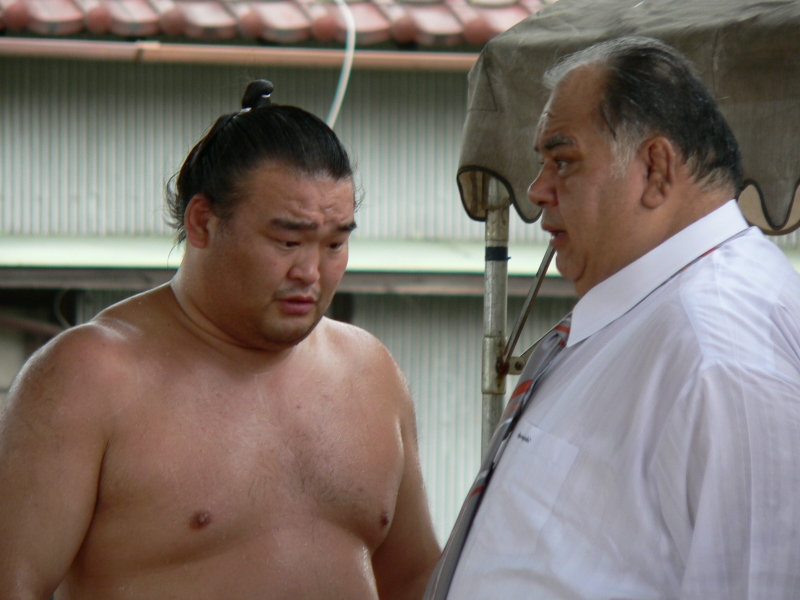|
SOS - Shinjinrui on Sumo |


|
Chris Gould
Chris sinks his teeth deeper into how sumo can go about pulling in the younger fans in part two of a three-part series.
|
|
|
Azumazeki up close and personal |



|
Steven Pascal-Joiner / William Titus
A wiz with a pen and a wiz with a lens get together with SFM to share
their time with Azumazeki Oyakata - Takamiyama as was - with the wider
sumo following world.
|
|
|
Rikishi of Old |


|
Joe Kuroda
Joe Kuroda takes a detailed look at the life and times of a former yokozuna forgotten by many - Maedayama.
|
|
|
Eric Evaluates |


|
Eric Blair
Eric calls the musubi-no-ichiban kimarite call on nakabi in Kyushu as perhaps only he could.
|
|
|
Heya Peek |



|
Jeff Kennel
First time heya visitor Jeff Kennel wrote about, photographed and even
made a video of his time spent at Arashio Beya prior to the Kyushu
Basho. All to be found within.
|
|
|
SFM Interview |
|
Mark Buckton
Mark interviews Russian up and comer Wakanoho of Magaki Beya.
|
|
|
Photo Bonanzas |


|
See behind the scenes at the Kyushu Basho, morning training in Arashio
Beya through the eyes of an artist and exactly what the Azumazeki lads
had to eat halfway though the July Nagoya Basho. All originals, all
seen here and nowhere else, and all for you.
|
|
|
Kyushu Basho Summary |


|
Lon Howard
Lon wraps the Kyushu Basho in Fukuoka and throws in some henka sighting results for good measure.
|
|
|
Lower Division Rikishi |
|
Mikko Mattila
The lower divisions, their members and results get the once over thanks
to Mikko's eyeing of life down below the salaried ranks.
|
|
|
Hatsu Ones To Watch |



|
Carolyn Todd
Carolyn ponders and puts fingers to keys on the ones to watch come January and the Hatsu Basho.
|
|
|
Kimarite Focus |
|
Mikko Mattila
Mikko's latest clarification of a handful of sumo's kimarite offers unequalled analysis and in depth explanations.
|
|
|
Amateur Angles |


|
Howard Gilbert
Howard looks at makushita tsukedashi and what it means in real terms.
|
|
|
Kokugi Konnections |
|
Todd Lambert
Click on Todd's bimonthly focus on three of the best sumo sites online.
|
|
|
Fan Debate |


|
Facilitators - Lon Howard / Carolyn Todd
Two SFMers talk over the yokozuna benefiting from weak opposition - or not as the case may be.
|
|
|
SFM Cartoons |
|
Benny Loh & Stephen Thompson
In this issue's cartoon bonanza, sit back and sample Stephen's artistic offerings.
|
|
|
Sumo Odds ’n’ Ends |
|
SFM's interactive elements including Henka Sightings, Elevator Rikishi and Eternal Banzuke!
|
|
|
Lets Hear From You |



|
What was it that made you a sumo fan? Starting with issue #10, the SFM
staff will reveal a little of their own routes into sumo fandom -
starting with Benny Loh.
|
|
|
Readers' Letters |
|
See what our readers had to say since we last hit your screens.
|
|
|
Sumo Quiz |
|
The Quizmaster
Answer the Qs and win yourself next basho’s banzuke.
|
|








